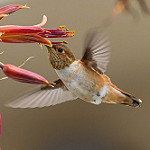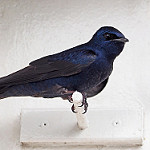Hardwood Rangeland Habitats: Although there are numerous ways to classify California’s oak-dominated woodlands, the five vegetation types used in the California Wildlife Habitat Relationships System (CWHR) are the most commonly used and are described below. The CWHR types are based on the dominant tree species, and we include information on Valley Oak Woodland, Blue Oak Woodland, Blue Oak-Foothill Pine Woodland, Coastal Oak Woodland, and Montane Hardwood Forest here for your reference.
Coastal Oak Woodland Vegetation Composition and Structure
Coastal oak woodlands are highly variable because of their wide distribution along California’s coast. Three oak species dominate the range of coastal oak woodlands: coast live oak throughout the central and southern range; Engelmann oak in a small area in southern California; and Oregon white oak in the moister, northern range of this community. Trees associated with Oregon white oak include California black oak, canyon live oak, Pacific madrone, and interior live oak. Species associated with coast live oak on moister sites are Pacific madrone, California bay, tanoak, and canyon live oak, while coast live oak occurs with valley oak, blue oak, and foothill pine on drier sites. In southern California, coast live oak is associated with interior live oak, valley oak, California black walnut and Coulter pine. Where Engelmann oak dominates, it may occur with coast live oak or in almost pure stands. Overstories range from open conditions to nearly closed canopies, resulting in a variable density of understory shrubs, grasses, and forbs. Annual grasses form most of the understory in open woodlands, but are almost non-existent in very dense woodlands. Coastal oak savannas typically occur adjacent to grassland habitats. Shrubs in closed canopy situations tolerate shade, and include toyon, poison-oak, California coffeeberry, and several species of ceanothus and manzanita.
Ecological Processes
Coast live oak, Oregon white oak, and Engelmann oak are relatively long-lived, slow-growing trees, requiring 60 to 80 years to mature to tree size under good conditions. Historically fires frequently occurred in these woodlands. Engelmann and coast live oaks are relatively resistant to low-intensity ground fires, while some mortality occurs to seedlings and saplings. Since coast live oak is fairly resistant to grazing pressure, it appears to be replacing the less resistant deciduous oaks in areas with intense grazing. Coast live oaks regeneration is generally good. However, adequate regeneration of Engelmann oak is not occurring for many of the same reasons affecting blue oaks. In Oregon white oak stands without frequent fires or other disturbances, Douglas-fir and other conifers may grow in the understory and eventually overtop the oaks.
Locational Characteristics
Coastal oak woodlands occur along California’s coastal foothills and valleys. Elevations range from sea level to around 5,000 feet. On steep slopes, coastal live oak woodlands occur as relatively small woodland patches in mosaics with annual grasslands, shrublands, and riparian habitats. Blue oak woodlands and montane hardwoods are found with the more interior and higher elevation coastal oak woodlands.
Physical Characteristics
Soils and its underlying rock parent materials are extremely variable. Coastal oak woodlands typically occur on moderately to well-drained soils that are moderately deep and have low to medium fertility. As with other hardwood-rangeland communities, considerable climatic extremes exist.
Vertebrate Wildlife Species Associations of Coastal Oak Woodlands
These PDFs provide a list of the species of amphibians, birds, mammals, and reptiles that are predicted to use coastal oak woodlands habitats. The lists are derived from Version 5.0 of the California Wildlife Habitat Relationships System (CWHR) and includes those species that are predicted to use one or more hardwood rangeland canopy cover classes for breeding, feeding, and/or cover. Most waterbirds like ducks, geese, gulls, and shorebirds were not included in the CWHR predictions because they are mostly associated with lakes, ponds, and rivers. The CWHR System is managed by the California Department of Fish and Wildlife.
The tables also indicate which of these hardwood rangeland species are predicted to use several important habitat elements of the California hardwood rangeland habitats. The elements listed include: acorns; riparian habitat; logs, slash, and brush piles; snags; burrows, rocks, talus, caves and cliffs; and vernal pools and wetland.
Also included are those species which have special status designation by the California Department of Fish and Wildlife and/or the U.S. Fish and Wildlife Service. Most of these species, particularly mammals and reptiles, have locally restricted subspecies that have a special status designation. If you have a species with a special status, you need to get more detailed local information on whether your population is in a subspecies with this special designation. You need to ensure that there is adequate protection for these species, and to make sure that you are not in violation of state or federal endangered species regulations.
Landowners and managers using these lists can get a general idea of which species might be located on a particular property, and which important habitat elements are important to their use of an area. These lists should not substitute for local-based surveys. Landowners may wish to consult with local CDFW biologists, or consulting wildlife biologists for more detailed local surveys of their lands.





